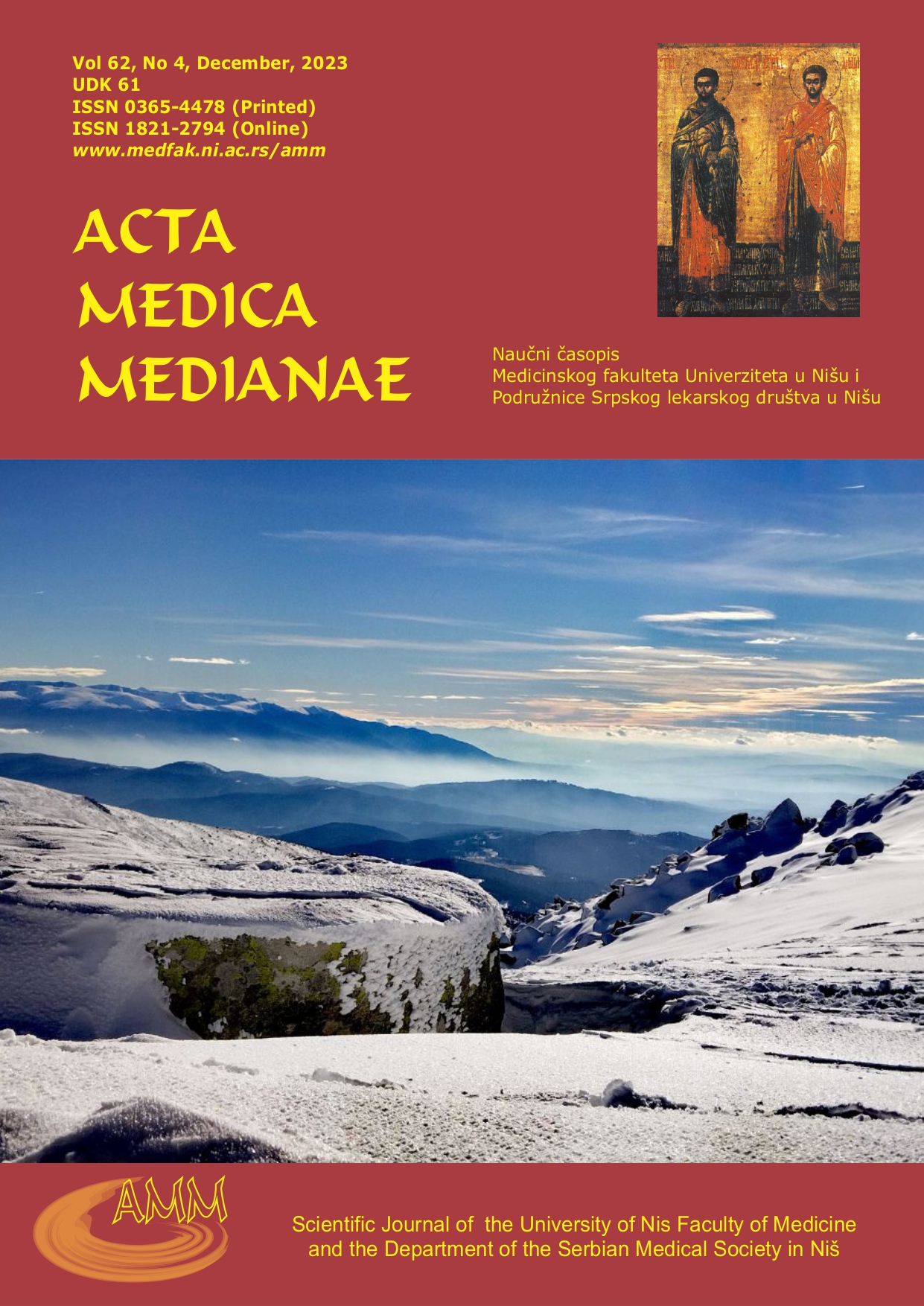SOURCES OF STRESS AMONG UNIVERSITY STUDENTS AND COPING METHODS
Abstract
The current literature confirms high-stress exposure in university students. That is why the aim of this study was to identify university students' self-reported sources of stress, and the most common stress coping methods. A cross-sectional study was performed to collect data on the most frequent sources of stress among university students and coping methods. The study included 309 students of the Faculty of Medicine in Foča (Bosnia and Herzegovina), 118 males and 191 females. The students rated the intensity of certain stressful situations on a scale of 1 to 10 and ranked them on an individual stress scale. The highest-ranked sources of stress were defined, and mostly they derived from non-academic sources of stress. The most common stress-coping methods were also defined. The main conclusions were that specific health promotion and stress management programs should be offered to university students in order to cope with strains during their studies.
References
Asif S, Mudassar A, Shahzad TZ, Raouf M, Pervaiz T. Frequency of depression, anxiety and stress among university students. Pak J Med Sci 2020; 36(5):971-6. [CrossRef] [PubMed]
Babicka-Wirkus A, Wirkus L, Stasiak K, Kozłowski P. University students' strategies of coping with stress during the coronavirus pandemic: Data from Poland. PLoS One 2021; 16(7):e0255041. [CrossRef] [PubMed]
Barbayannis G, Bandari M, Zheng X, Baquerizo H, Pecor KW, Ming X. Academic Stress and Mental Well-Being in College Students: Correlations, Affected Groups, and COVID-19. Front Psychol 2022; 13:886344. [CrossRef] [PubMed]
Bergin A, Pakenham K. Law student stress: relationships between academic demands, social isolation, career pressure, study/life imbalance and adjustment outcomes in law students. Psychiat, Psych Law 2015; 22(3): 388–406. [CrossRef]
Byrd DR, McKinney KJ. Individual, interpersonal, and institutional level factors associated with the mental health of college students. J Am Coll Heal 2012; 60(3):185–93. [CrossRef] [PubMed]
Chiauzzi E, Brevard J, Thurn C, Decembrele S, Lord S. My student body–stress: an online stress management intervention for college students. J Health Commun 2008; 13(6):555–72. [CrossRef] [PubMed]
Dahlin M, Joneborg N, Runeson B. Stress and depression among medical students: a cross-sectional study. Med Educ 2005; 39(6):594–604. [CrossRef] [PubMed]
Dyrbye LN, Thomas MR, Shanafelt TD. Systematic review of depression, anxiety, and other indicators of psychological distress among US and Canadian medical students. Acad Med 2006; 81(4): 354–73. [CrossRef] [PubMed]
Heinen I, Bullinger M, Kocalevent RD. Perceived stress in first year medical students—associations with personal resources and emotional distress. Bmc Med Educ 2017; 17:4. [CrossRef] [PubMed]
Hilger-Kolb J, Diehl K, Herr R, Loerbroks A. Effort-reward imbalance among students at German universities: associations with self-rated health and mental health. Int Arch Occ Env Hea 2018; 91(8):1011–20. [CrossRef] [PubMed]
Holmes TH, Rahe RH. The Social Readjustment Rating Scale. J Psychosom Res 1967; 11(2): 213–8. [CrossRef] [PubMed]
Kenrick DT, Griskevicius V, Neuberg SL, Schaller M. Renovating the Pyramid of Needs: Contemporary Extensions Built Upon Ancient Foundations. Perspect Psychol Sci 2010; 5(3):292-314. [CrossRef] [PubMed]
Misra R, McKean M. College students’ academic stress and its relation to their anxiety, time management, and leisure satisfaction. Am J Health Stud 2000; 16:41–51.
Onieva-Zafra MD, Fernández-Muñoz JJ, Fernández-Martínez E, García-Sánchez FJ, Abreu-Sánchez A, Parra-Fernández ML. Anxiety, perceived stress and coping strategies in nursing students: a cross-sectional, correlational, descriptive study. BMC Med Educ 2020;20(1):370. [CrossRef] [PubMed]
Portoghese I, Leiter MP, Maslach C, Galletta M, Porru F, D’Aloja E, Finco G, Campagna M. Measuring Burnout Among University Students: Factorial Validity, Invariance, and Latent Profiles of the Italian Version of the Maslach Burnout Inventory Student Survey (MBI-SS). Front Psychol 2018; 9: 2105. [CrossRef] [PubMed]
Rotenstein LS, Ramos MA, Torre M, Segal JB, Peluso MJ, Guille C, et al. Prevalence of depression, depressive symptoms, and suicidal ideation among medical students: a systematic review and meta-analysis. Jama 2016; 316(21): 2214–36. [CrossRef] [PubMed]
Rutkowski L, Svetina D. Assessing the hypothesis of measurement invariance in the context of large-scale international surveys. Educ Psychol Meas 2014; 74(1): 31–57. [CrossRef] [PubMed]
Ryan ML, Shochet IM, Stallman HM. Universal online interventions might engage psychologically distressed university students who are unlikely to seek formal help. Adv Mental Health 2010; 9(1):73–83. [CrossRef]
Shearer A, Hunt M, Chowdhury M, Nicol L. Effects of a brief mindfulness meditation intervention on student stress and heart rate variability. Int J Stress Manage 2016; 23(2):232–54. [CrossRef]
Stallman HM, Hurst CP. The university stress scale: measuring domains and extent of stress in university students. Aust Psychol 2016; 51:128–34. [CrossRef]

